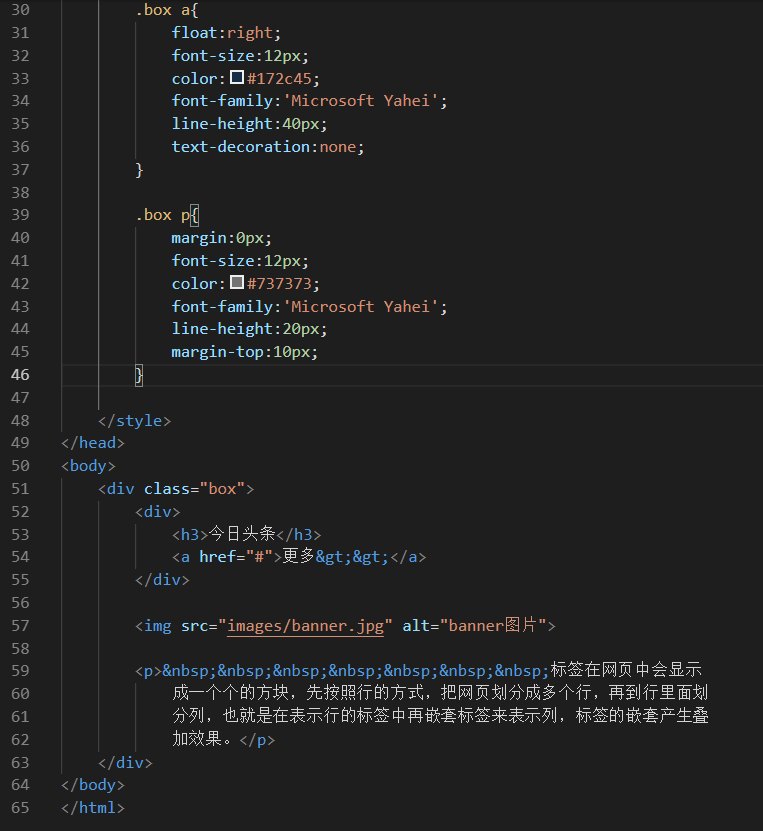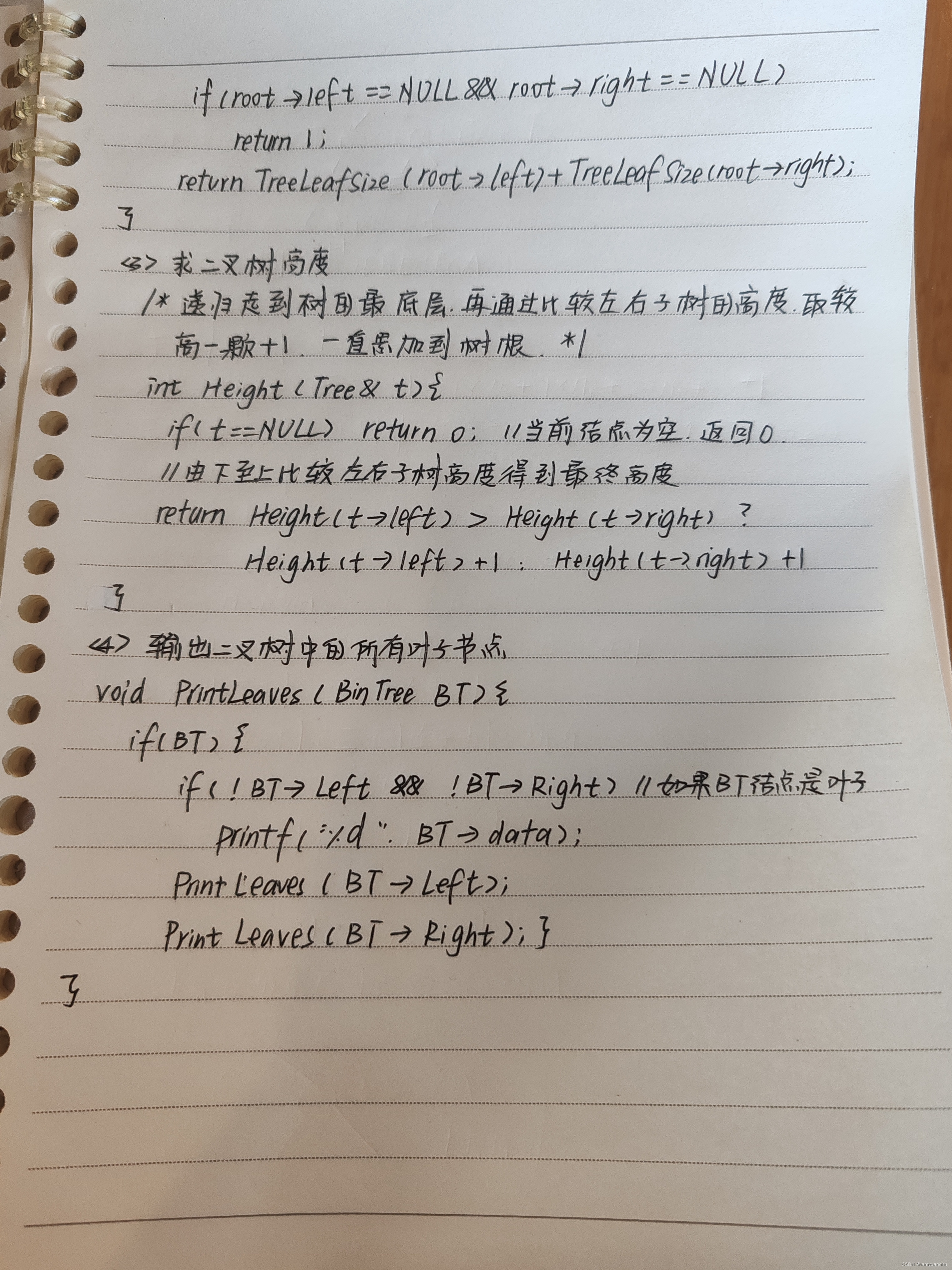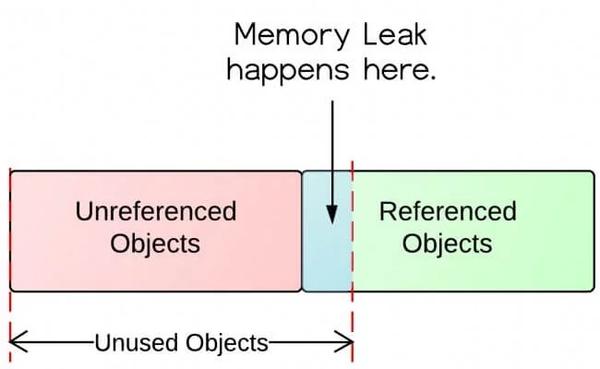堆的基本概念
堆在逻辑上是完全二叉树,那什么又是完全二叉树呢?
完全二叉树简单来说就是前n-1层每个节点都有两个儿子,最后一层叶子紧挨着排列。
堆在物理结构上适合用数组存储。

让我们先来学习树->二叉树的基本知识(可看文章:http://t.csdnimg.cn/8GUQH),来更好学习堆
堆分为大(根)堆和小(根)堆
大堆:任何一个父亲节点都大于他的两个儿子
小堆:任何一个父亲节点都小于他的两个儿子

补充(必须要掌握)
在数组中,孩子找父亲,父亲找孩子数组下标的表示
左孩子找父亲:parent(的下标)=chlid(的下标)*2+1;
右孩子找父亲:parent(的下标)=chlid(的下标)*2+2;
孩子找父亲:child=(parent-1)/2;
堆的定义
typedef int HPDataType;
typedef struct Heap
{
HPDataType* a;//数组
int size;
int capacity;
}HP;在堆中有两个很重要的算法:向上调整算法和向下调整算法
向上调整算法
假设我们要向一个小堆中插入一个数据,如果插入的数据比他的父亲还小,那我们就需要交换他们的位置,交换了之后,该数据成为替代原本的父亲,再比较他与他现在的父亲的关系,如果还是比他父亲小则,二者交换......直到插入的数据大于他的父亲。我们要实现一个向上调整算法


void Adjustup(HPDataType*a,int child)
{
int parent = (child - 1) / 2;
while (child>0)
{
if (a[child] < a[parent])
{
Swap(&a[child], &a[parent]);
child = parent;
parent = (parent - 1) / 2;//找原本父亲的父亲下标
}
else
{
break;
}
}
}为了更好的实现复用我们此处第一个参数传的是一个数组指针,而不是堆指针,插入是在数组最后一个数据的后面进行插入,所以我们要从下往上调整。
向下调整算法
该算法一般应用于,删除树顶数据。(以小堆为例)
第一步是要将树顶数据,与树末端数据进行交换,此时树末端数据成为新的树顶,size--删除原来的树顶
第二步再调用向下调整算法,此时树顶数据需要与他的儿子们比较,若是大于儿子,则要向下调整,调整到符号小堆结构为止

void AdjustDown(HPDataType*a, int n,int parent)
{
int child = parent * 2 + 1;
while (child<n)
{
if (child + 1 < n && a[child + 1] < a[child])
{
child++;
}
if (a[child] < a[parent])
{
Swap(&a[child], &a[parent]);
parent = child;
child = child * 2 + 1;
}
else
{
break;
}
}
}初始化
方式一
void HPInit(HP* hp)
{
assert(hp);
hp->a = NULL;
hp->size = hp->capacity = 0;
}方式二
void HPArrayInit(HP* hp, HPDataType* a, int n)
{
assert(hp);
hp->a = (HPDataType*)malloc(sizeof(HPDataType) * n);
if (hp->a == NULL)
{
perror("malloc fail");
return;
}
memcpy(hp->a, a, n * sizeof(HPDataType));
hp->size = hp->capacity = n;
//向上调整,建堆时间复杂度O(N*logN)
//for (int i = 1; i < hp->size; i++)
//{
// Adjustup(hp->a, i);
//}
//向下调整,建堆时间复杂度O(N)
for (int i = (hp->size - 1 - 1) / 2; i >= 0; i--)
{
AdjustDown(hp->a, hp->size, i);
}
}向上调整建堆与向下调整建堆时间复杂度的分析
向上

向下

销毁
void HPDestroy(HP* hp)
{
assert(hp);
hp->size = hp->capacity = 0;
free(hp->a);
hp->a = NULL;
}堆的插入
//交换函数
void Swap(HPDataType* px, HPDataType* py)
{
HPDataType tmp;
tmp = *px;
*px = *py;
*py = tmp;
}
// 堆的插入
void HPPush(HP* hp, HPDataType x)
{
assert(hp);
//扩容
if (hp->size == hp->capacity)
{
int newcapacity = hp->capacity == 0 ? 4 : 2 * hp->capacity;
HPDataType* tmp = (HPDataType*)realloc(hp->a, sizeof(HPDataType)*newcapacity);
if (tmp == NULL)
{
perror("realloc fail");
return;
}
hp->a = tmp;
hp->capacity = newcapacity;
}
hp->a[hp->size++] = x;
Adjustup(hp->a, hp->size - 1);
}堆的删除
// 堆的删除
void HPPop(HP* hp)
{
assert(hp);
assert(hp->size > 0);
Swap(&hp->a[0], &hp->a[hp->size - 1]);
hp->size--;
AdjustDown(hp->a, hp->size, 0);
}取堆顶的数据
HPDataType HPTop(HP* hp)
{
assert(hp);
return hp->a[0];
}判空
int HPEmpty(HP* hp)
{
assert(hp);
return hp->size == 0;
}堆的个数
int HPSize(HP* hp)
{
assert(hp);
return hp->size;
}总代码
头文件
#pragma once
#include<stdio.h>
#include<stdlib.h>
#include<stdbool.h>
#include<assert.h>
#include<string.h>
typedef int HPDataType;
typedef struct Heap
{
HPDataType* a;
int size;
int capacity;
}HP;
//初始化
void HPInit(HP* hp);
void HPArrayInit(HP* hp, HPDataType* a, int n);
//销毁
void HPDestroy(HP* hp);
// 堆的插入
void HPPush(HP* hp, HPDataType x);
// 堆的删除
void HPPop(HP* hp);
// 取堆顶的数据
HPDataType HPTop(HP* hp);
// 堆的数据个数
int HPSize(HP* hp);
// 堆的判空
int HPEmpty(HP* hp);
//向上调整算法
void Adjustup(HPDataType* a, int child);
//向下调整算法
void AdjustDown(HPDataType* a, int n, int parent);
函数实现
#include"Heap.h"
//初始化
void HPInit(HP* hp)
{
assert(hp);
hp->a = NULL;
hp->size = hp->capacity = 0;
}
void HPArrayInit(HP* hp, HPDataType* a, int n)
{
assert(hp);
hp->a = (HPDataType*)malloc(sizeof(HPDataType) * n);
if (hp->a == NULL)
{
perror("malloc fail");
return;
}
memcpy(hp->a, a, n * sizeof(HPDataType));
hp->size = hp->capacity = n;
//向上调整,建堆时间复杂度O(N*logN)
//for (int i = 1; i < hp->size; i++)
//{
// Adjustup(hp->a, i);
//}
//向下调整,建堆时间复杂度O(N)
for (int i = (hp->size - 1 - 1) / 2; i >= 0; i--)
{
AdjustDown(hp->a, hp->size, i);
}
}
//销毁
void HPDestroy(HP* hp)
{
assert(hp);
hp->size = hp->capacity = 0;
free(hp->a);
hp->a = NULL;
}
//交换函数
void Swap(HPDataType* px, HPDataType* py)
{
HPDataType tmp;
tmp = *px;
*px = *py;
*py = tmp;
}
//向上调整算法
void Adjustup(HPDataType*a,int child)
{
int parent = (child - 1) / 2;
while (child>0)
{
if (a[child] < a[parent])
{
Swap(&a[child], &a[parent]);
child = parent;
parent = (parent - 1) / 2;//找原本父亲的父亲下标
}
else
{
break;
}
}
}
// 堆的插入
void HPPush(HP* hp, HPDataType x)
{
assert(hp);
//扩容
if (hp->size == hp->capacity)
{
int newcapacity = hp->capacity == 0 ? 4 : 2 * hp->capacity;
HPDataType* tmp = (HPDataType*)realloc(hp->a, sizeof(HPDataType)*newcapacity);
if (tmp == NULL)
{
perror("realloc fail");
return;
}
hp->a = tmp;
hp->capacity = newcapacity;
}
hp->a[hp->size++] = x;
Adjustup(hp->a, hp->size - 1);
}
//向下调整算法
void AdjustDown(HPDataType*a, int n,int parent)
{
int child = parent * 2 + 1;
while (child<n)
{
if (child + 1 < n && a[child + 1] < a[child])
{
child++;
}
if (a[child] < a[parent])
{
Swap(&a[child], &a[parent]);
parent = child;
child = child * 2 + 1;
}
else
{
break;
}
}
}
// 堆的删除
void HPPop(HP* hp)
{
assert(hp);
assert(hp->size > 0);
Swap(&hp->a[0], &hp->a[hp->size - 1]);
hp->size--;
AdjustDown(hp->a, hp->size, 0);
}
// 取堆顶的数据
HPDataType HPTop(HP* hp)
{
assert(hp);
return hp->a[0];
}
// 堆的数据个数
int HPSize(HP* hp)
{
assert(hp);
return hp->size;
}
// 堆的判空
int HPEmpty(HP* hp)
{
assert(hp);
return hp->size == 0;
}测试
#include"Heap.h"
int main()
{
int a[] = { 60,70,65,50,32,100 };
HP hp;
//HPInit(&hp);
HPArrayInit(&hp, a, 6);
/*for (int i = 0; i < sizeof(a) / sizeof(int); i++)
{
HPPush(&hp, a[i]);
}*/
//printf("%d\n", HPTop(&hp));
//HPPop(&hp);
//printf("%d\n", HPTop(&hp));
while (!HPEmpty(&hp))
{
printf("%d\n", HPTop(&hp));
HPPop(&hp);
}
HPDestroy(&hp);
return 0;
}
欢迎各位大佬一起学习交流~



















